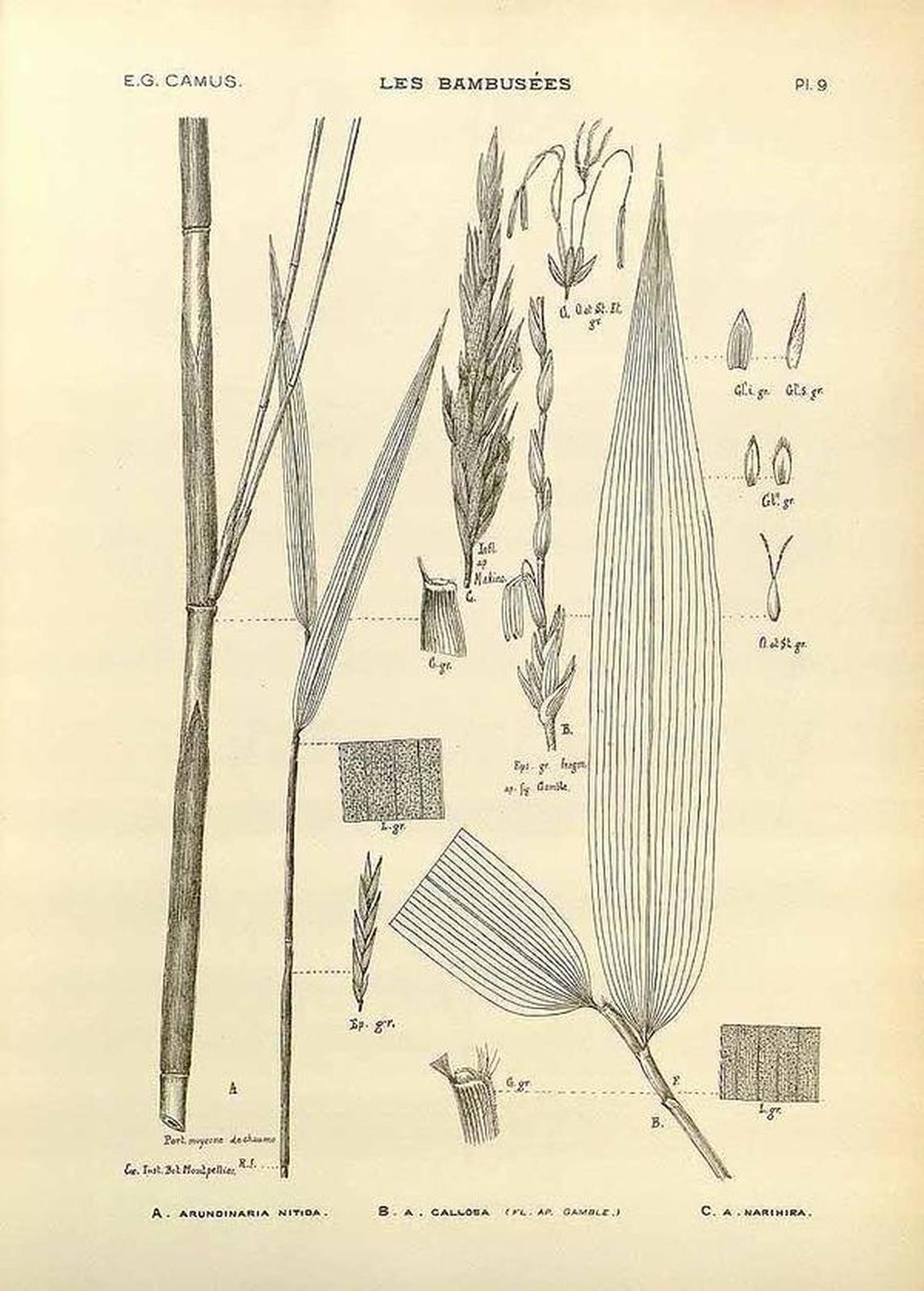Semiarundinaria fastuosa (Mitford) Makino
PoaceaeEspecie originaria de Japón, se cultiva por muchas zonas de Asia debido a sus múltiples usos, desde la alimentación, por sus brotes comestibles, hasta la obtención de papel de sus cañas y hojas, sin olvidar la construcción o la elaboración de instrumentos musicales. El bambú, que no es un árbol, aparece no obstante formando bellas formaciones boscosas con connotaciones sagradas en Japón. Es todo un símbolo para una de las religiones características de la cultura japonesa, el sintoísmo. Dentro de esta tradición espiritual basada en la veneración por los espíritus de la naturaleza y el culto a los antepasados, el tallo de bambú es la imagen perfecta de la vida humana: crece entre dos nudos, entre dos puntos de inicio y final. Primero están las generaciones pasadas y después las futuras, y la persona se encuentra en una línea vertical de continuidad con ellas. La vida se sitúa dentro de relaciones imposibles de romper y de las que cada individuo forma parte. Romero Zarco ya destacó hace algunos años el gran porte y diámetro de los ejemplares existentes en los jardines del Real Alcázar. La presencia de esta planta en España y en Sevilla puede ser más antigua de lo que se pudiera pensar en un principio. Asociado muchas veces a la moda orientalista en la jardinería romántica y post-romántica de un lado, tildado de extranjerismo por los regionalistas de otro, el bambú pudo ya ser conocido por los nazaríes, es decir, al final del periodo andalusí. Los nazaríes, que comerciaban con productos exóticos a través de la Ruta de la Seda, pudieron pues traer estas plantas desde el lejano Oriente a sus huertas y jardines palaciegos.
Procedencia
Oriental/AsiáticoCalendario
Hábitat
Morfología
 Planta
Planta
 Cilindrocónica
Cilindrocónica
 Simple
Simple
 Lanceolada
Lanceolada
 Alterna
Alterna
 Entero
Entero
 Cuneada
Cuneada
 Acuminado
Acuminado
 Perenne
Perenne
